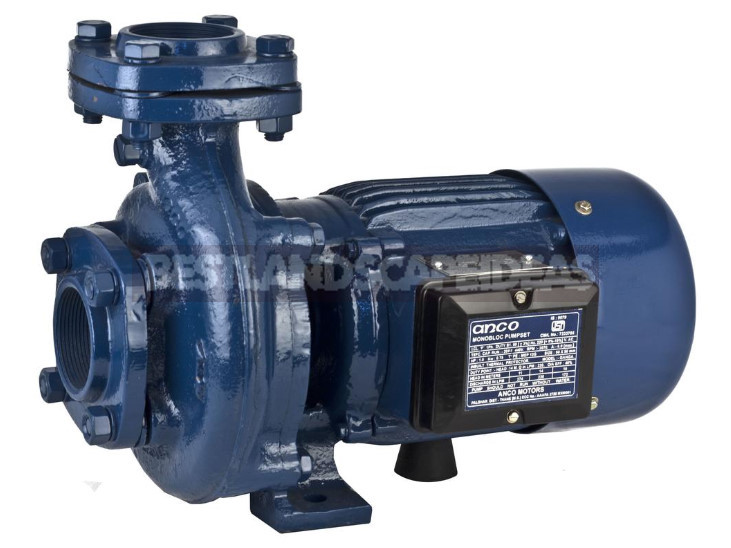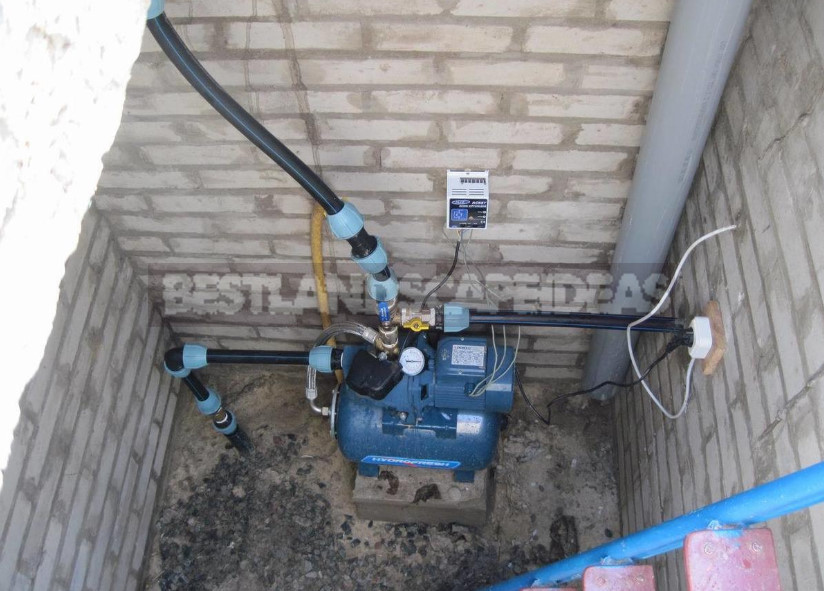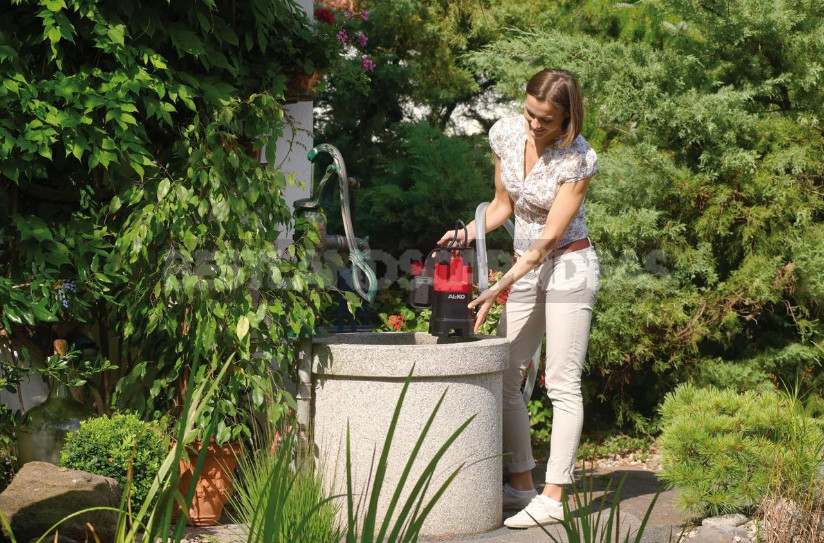Having arranged at the site of the well, you will face the need to raise water from it. You can do the old-fashioned — bucket, and this is one of the positive differences from the well of the well: you can always get water, even if the electricity is turned off. Many do. And you can simplify the process by putting the pump.
A pump is a hydraulic machine. It converts mechanical energy — muscle or engine, into the energy of the flow of liquid or gas (in our case — water). Thanks to this energy, we can lift water from the depth, move it to a certain distance, including vertically, and set the speed of the flow.
The first pump, a famous scientist, invented by the Greek engineer and mathematician Ctesibius, who lived in the 300’s BC, Ctesibius, who is considered the “father” of hydraulics and Pneumatics, described the General principle on which is based the action of many developed subsequently, pumps: piston, vane, rotary, impeller and others. But let me turn to the practical side-how to choose a pump for the well in the country?
Submersible or surface?
For the end user, the principle of operation of the unit is not so important: it raises the water with a piston, gears, Cams, soft rotor or sinusoid disc. All domestic pumps for liquid pumping are divided into two types:
- submersible, in which the mechanism is in the pumped liquid;
- surface-mounted on the surface, and only the suction pipe is immersed in the liquid.

Before you go shopping, determine whether a submersible or surface pump is right for you. And then you have to remember the lessons of physics.
Remember the Chapter in the textbook about the discovery of atmospheric pressure Evangelists Torricelli — experiments with tubes and mercury? The pump does not draw water. It creates a vacuum in the chamber of its body, into which water is “pushed” by atmospheric pressure.
Therefore, the surface pump can lift water from depths greater than 10.3 m to this height in the tube rises, the water expelled by the pressure of the atmosphere on the water in the well.

Also, do not forget that 10.3 m is a value that is valid only for ideal conditions (as in the school problem book). In reality, the depth from which the pump can raise water is less: if the well is above sea level, this value is reduced. Also it is affected by friction losses and so on.

Therefore, pump manufacturers say about 9 m, which in practice are reduced even more-up to 7 meters. That is, we can confidently say that the pump will raise the water from 5 m without reducing the pressure. If, of course, your cottage is not in the mountains.
How to fight the laws of physics
To defeat some laws of physics, other laws can come to the rescue. An ordinary surface pump is suitable for shallow wells-within 7 m. If the water level is deeper, you can try to bring the unit itself to the water by placing the surface pump inside the well on the site arranged in the mine.

Another option is to place the pump in a caisson next to the well, the depth of which compensates for the “extra” meters. The same method works if you need water to supply the house and there is a basement, which will serve as a caisson. However, to arrange a caisson and a basement deeper than 4 meters may be impractical.
If the water source is below 7 m, then to some extent (there is still a limit) the problem will be solved by another physical law — Bernoulli’s law. In his principle works, the ejector device serving to pump a jet of water or gas with higher pressure. It enhances the power and raise the main jet.
Pumping stations equipped with an ejector are capable of lifting water from a depth of 25-40 m. Keep in mind that the efficiency of the pump with an ejector will be low.
If the water in the well is even deeper-then you are in the Department where they sell submersible pumps. Having determined the type of unit (surface or submersible), you can move on to other options.
Pump capacity
Pump capacity (flow) — the amount of water that the pump pumps per unit time. Measured in cubic meters per hour (m³/h) or liters per second (l/s). Consumers are trying to get more productive-just enough.
Many sources offer to choose the performance of the pump, calculating the maximum water consumption, that is, taking into account the simultaneous inclusion of all water consumers in the house: sinks, baths, showers, washing machines and dishwashers. Called and indicative rates of consumption-1000 liters per person per hour. I do not know how to pour a cube of water for an hour, given the average flow rate in a conventional mixer 4 liters per minute.

Offer to count the tables drawn up for the selection of pumping equipment for large objects and industrial enterprises and apartment houses. In my opinion, such consumption values are needed to explain why pumps with capacity, for example, 4500 l/h are sold. Such powerful units are relevant for high-performance wells. The owners of the wells should first of all focus not on their own water consumption, but on the flow rate of their water source, because the inflow in the well for an hour may be less than the pump capacity.
In this case, it is necessary to arrange a water supply system with a water accumulator — a capacity whose volume obviously exceeds the daily water consumption in the house. Then the pump with a small capacity, consistent with the flow rate of the well, will fill the tank from which water will be supplied to the taps in the house.
Pump head
Another important feature for the selection of equipment is the pump head. As mentioned above, the pump is a hydraulic machine, that is, a device that converts energy. Its design is such that the force (engine or muscles) applied to the pump, not only allows you to pump water, but also tells her the potential and kinetic energy. The quantitative characteristic of the amount of energy is called the pump head-this is the force created by the design of the pump to move the pumped medium, in our case — water.
The pump head is usually measured in meters. And in the calculations take into account only the vertical direction of movement of water, that is, at what height can be filled vertical pipe attached to the outlet of the pump.
Since the user is interested not only in the delivery of water to the highest point, but also to work at this point of the mixer, in addition to the height of the rise is also interesting and pressure. In standard water supply systems, the operating pressure is from 1.5 to 3 atmospheres. It is used to overcome the hydraulic resistance: water friction on the walls of pipes, cornering, horizontal movement. And also to create a jet of a certain power from the outflow of the mixer-who likes to wash under the shower, from which the water barely flows?

The operating pressure in the water supply depends on the pump head, and therefore on the lifting height. Every 10 m ascent is equal to 1 atmosphere. That is, if the pump characteristic indicates that the maximum lifting height is 50 m, this means that either a pressure of 5 atmospheres will be created at the pump outlet, or water can rise to a height of 50 m, or the 3 atmospheres in the system will be at a height of 20 m.
Pump efficiency
The efficiency of any unit is calculated as the ratio of the useful power to the spent power. The efficiency of the pump is determined by its design, as well as the type of pumped liquid or gas.

The useful action performed by the pump depends not only on the unit itself, but also on the entire hydraulic system: a large number of turns, narrowing and expansion of the pipeline increases the vortex losses, which in turn reduces the efficiency of the pumping equipment. In General, the efficiency of the submersible unit is higher than the surface: the pump, which is in the water, do not need to waste energy on the absorption of water.
That’s all the important parameters of the pump selection. And with the brand and the cost of each will be able to decide on their own.






